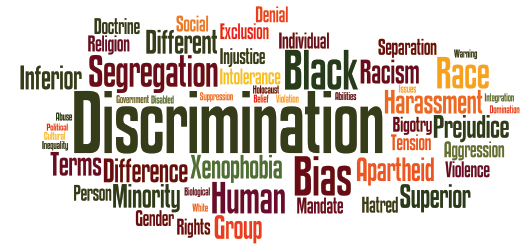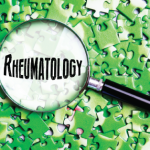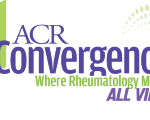
SurabhiArtss / shutterstock.com
Implicit bias negatively affects patients and clinicians alike in a variety of healthcare settings. Unconscious feelings and attitudes about others can damage professional and personal relationships.
Demystifying Bias
At the virtual ACR Division & Program Directors Conference in March, three physician leaders presented a panel called, Demystifying Bias: Empowering You to Have Courageous Conversations, and led small groups in troubleshooting exercises. They provided historical context and a multitude of ways to address implicit bias based on race as it arises in the workplace, whether you are the recipient of a microaggression, a bystander or the culprit.
“Unfortunately, biases are pervasive and infiltrate everything. That’s part of what we need to accept when we’re tackling them,” said Irene Blanco, MD, MS, director of the rheumatology training fellowship program at Albert Einstein College of Medicine, the Bronx, N.Y.
One of the workshop goals was to help participants learn how to increase their awareness of bias and preparedness to address and engage in conversations that can lead to impactful changes in work and learning environments. “Educators must be able to respond professionally to incidents of bias and/or discrimination in multiple settings,” said Dr. Blanco.
According to Dr. Blanco, courageous conversations involve four agreements: to stay engaged; to speak one’s truth; to experience discomfort; and to expect and accept that the conversation may not lead to closure.
Takeaways
Racism has been embedded in medical education. Racism in medical education reaches back—at minimum—to Reconstruction in the 1860s, when the American Medical Association refused to accept membership of Black and indigenous physicians, said Shani Scott, MD, a clinical educator and Firm 1 assistant program director in the Internal Medicine Residency Program at Albert Einstein College of Medicine.
The Flexner Report of 1910 molded many aspects of today’s medical profession with its high admissions and graduation standards. The report was also responsible for introducing racist stereotypes of Black medical students and faculty, suggesting Black physicians should only treat Black patients and be subservient to white physicians. And the report was the catalyst for all but two Black medical schools (Howard and Meharry) closing in the U.S.
The Flexner report remains “embedded in the norms of how we practice medicine,” said Dr. Scott, adding that its author, Abraham Flexner, directly recommended standardized testing in an environment in which it was illegal and deadly for Black citizens to read. She said standardized tests remain biased today, with numerous studies indicating they lead to fewer minorities in medicine and bear no direct relationship to how one will practice once they complete training.
‘Unfortunately, biases are pervasive & infiltrate everything. That’s part of what we need to accept when we’re tackling them.’ —Irene Blanco, MD
Calls to address racism in medical education are increasing, and medical students are organizing to combat hostile learning environments while many minority faculty are leaving academic medicine due to the ongoing effects of racism in the medical profession.
“It is vital that academic institutions become actively anti-racist,” Dr. Scott said, “and specifically focused on medical education as one of the many catalysts for change for minoritized communities.”
Implicit bias continues to have an impact on healthcare settings: A common microaggression Black and brown medical students and physicians face in the workplace is being mistaken for a nurse, an orderly or a janitor. When a doctor addresses the misconception, rather than being met with an apology they are often told they’re being overly sensitive.
Other microaggressions include calling a Black or brown person “articulate”—the implication being that this is unusual—or saying you “don’t see color” or you are “colorblind.” Black and brown people don’t live in a colorblind world, and when you boast you don’t see color, you show your eyes are closed to their experience.
“Racial microaggressions lead to psychological stress, physiological stress and behavioral stress,” said Dr. Blanco, adding that the accumulation of stress can lead to traumatic psychological and physiological symptoms, including anxiety, fatigue, ulcers, elevated blood pressure and loss of appetite.
These attitudes affect patients from underrepresented groups, as well as healthcare providers. Some healthcare professionals may blame patients for their illnesses. They may view minority patients as “lazy” and assume they are ill because they don’t take care of themselves, rather than understanding that significant barriers to their good health and well-being may exist.
In an article published in the Journal of Public Health, researchers looked at the way clinicians communicate with patients and addressed the implicit bias in faculty and attendings.1 In the cross-sectional study of 40 primary care physicians and 269 patients in urban community-based practices, implicit bias was monitored with two implicit bias association tests. The study found these communications with patients tended to be clinician dominated and less centered on patients. Patients gave clinicians lower ratings on trust and confidence.
“Ultimately, the conclusion from the study highlighted that clinician implicit bias and race compliance stereotyping are associated with markers for poor visit communication, and poor ratings of care, particularly among Black patients,” said Dr. Scott.
Even nonverbal communication can convey racial bias to patients. A 2016 study of end-of-life care published in the Journal of Pain and Symptom Management sought to understand why Black patients are more likely to die in the intensive care unit than white patients, despite all receiving life-sustaining treatment.2 Although patients did not score physicians differently based on verbal communication, physicians’ nonverbal communication scores were significantly lower from Black patients than from white patients.
“In this small regional sample, researchers were able to ultimately conclude that hospital-based physicians have similar verbal communication behaviors when discussing end-of-life care for similar Black and white patients,” Dr. Scott said, “but did exhibit significantly fewer positive, rapport-building, nonverbal cues with Black patients.”
Cultural vs. Structural Competency
Cultural competency, a concept developed nearly 60 years ago, is intended to address disparities in health outcomes. “This particular framework aims to focus on communication and building trust with patients,” Dr. Scott said. “It is also intended to enhance knowledge about sociocultural factors linked to health benefits and tries to develop awareness about certain cultural groups. But it is deeply flawed.”
The problem with cultural competency is that healthcare providers are affected by their own implicit biases. Additionally, attempting to make providers aware of the dynamics of a certain culture can lead to a habit of stereotyping patients. Plus, according to Dr. Scott, scant research has looked at the health outcomes of people treated by clinicians who employ cultural-based competencies.
“The best way for us to address this is to move beyond a framework of cultural competency and embrace structural competency,” said Dr. Scott. “Structural competency is the ability of providers to move beyond the cultural dynamics of our patients and to look at upstream effects on health outcomes.”
These upstream effects would take into consideration how laws, policies, education, transportation systems and food available in underserved neighborhoods, among other things, can affect patients and shape their ability to manifest health or disease.
Dr. Scott discussed a 1973 series of studies in the Archives of General Psychiatry that highlight how a cultural competency framework led to the schizophrenia misdiagnosis of a large number of Black patients in the 1960s.3 Black people were also significantly less likely than white people to receive a diagnosis for other mental illnesses, such as depression or bipolar disorder.
“This highlights how we need to move past a cultural framework, which could lead us down a path that still propagates health disparities,” Dr. Scott said, “and instead embrace a structural competency framework.”
How to become more structurally competent: Becoming more structurally competent as a healthcare provider can be a tool to combat racism in both the medical and clinical teaching environments. Dr. Scott offered some ways to become structurally competent:
- Remain skeptical of race-based differences and diagnoses. Race should not be used as a shortcut in making diagnoses or assuming health outcomes;
- Create alliances with doctors and other professionals who serve vulnerable communities. When providing care to marginalized or oppressed populations, partner with community organizers and activists who center their work on creating solutions to help dismantle health disparities;
- Learn from social scientists and other professionals; and
- Speak up when you notice a microaggression and become comfortable with being uncomfortable and having challenging, difficult conversations.
Renée Bacher is a health and medical writer based in Louisiana.
Role-Based Approaches to Addressing Microaggressions
Racial microaggressions are short and subtle verbal, behavioral or environmental indignities. Intentional or unintentional, they convey hostile, derogatory or negative racial slights toward people of color. They convey the offending party’s implicit bias, often below their own conscious awareness.4
The three approaches below can help clinicians address microaggressions whether they are the source of the microaggression, a bystander or the recipient:5
Source-ASSIST Approach
You may commit a microaggression against Black or brown person without knowing it. When the incident is brought to your attention, you can:
- Acknowledge your bias—This is a step toward awareness and changing attitudes and behaviors.
- Seek feedback and information—If you’re confused about your error, ask for clarification.
- Say you’re sorry—Owning mistakes can be a first step toward healing.
- Consider the impact, not your intent—Your intention pales in comparison to the impact your words may have had.
- Say thank you—Black and brown people are tired of being subjected to racial bias. It’s important to express gratitude when someone educates you.
Bystander-ARISE Approach
You may witness a colleague or patient subjected to a microaggression and you may be conflicted about whether to say something or get involved. “If you were there and you’re a bystander, you are already involved,” said Rhonda G. Acholonu, MD, vice chair for education and assistant professor of pediatrics at The Children’s Hospital at Montefiore, the Bronx, N.Y. “Silence speaks volumes. When we don’t say anything, that really does say something.” It can also set the tone for what is acceptable at your institution.
When you’re a bystander to a microaggression, you can:
- Make the culprit aware of the microaggression—Point out the microaggression when you see or hear it.
- Respond with empathy—Give the speaker the benefit of the doubt.
- Inquire—Approach the situation with curiosity and make inquiries of the source of the microaggression: “Can you explain your comment to me? What did you mean by that?”
- Make statements that start with “I”—“I’m wondering what you meant by …”
- Educate and engage—Help the individual understand the actual or potential impact of their statement or action.
Recipient-ACTION Approach
If you are the recipient of a microaggression, you may feel unable to respond in the moment—and you shouldn’t be expected to always address the source. In a healthcare setting, you may also be concerned about a power dynamic and repercussions from anything you might say. If you do decide to respond, try the following:
- Ask a clarifying question—“You seem surprised I received a high score. Are you surprised?”
- Come from a place of curiosity—“I don’t understand why you said that.”
- Tell what you observed—“I heard you say all Hispanic people have fibromyalgia and that doesn’t make sense to me.”
- Explore the impact—Explain the impact the microaggression had on you. “Your surprise makes me feel like people doubt my intellect and ability.”
- Own your thoughts and feelings—“I get upset when people generalize about ethnic groups.”
- Remain open to next steps—Talk about how to proceed going forward.
References
- Cooper LA, Roter DL, Carson KA, et al. The associations of clinicians’ implicit attitudes about race with medical visit communication and patient ratings of interpersonal care. Am J Public Health. 2012 May;102(5):979–987.
- Elliott AM, Alexander SC, Mescher CA, et al. Differences in physicians’ verbal and nonverbal communication with Black and white patients at the end of life. J Pain Symptom Manage. 2016 Jan;51(1):1–8.
- Simon RJ, Fleiss JL, Gurland BJ, et al. Depression and schizophrenia in hospitalized Black and white mental patients. Arch Gen Psychiatry. 1973 Apr;28(4):509–512.
- Sue DW, Capodilupo CM, Torino GC, et al. Racial microaggressions in everyday life: Implications for clinical practice. Am Psychol. 2007 May–Jun;62(4):271–286.
- Ackerman-Barger K, Jacobs NN, Orozco R, London M. Addressing microaggressions in academic health: A workshop for inclusive excellence. MedEdPORTAL. 2021 Feb 11;17:11103.



